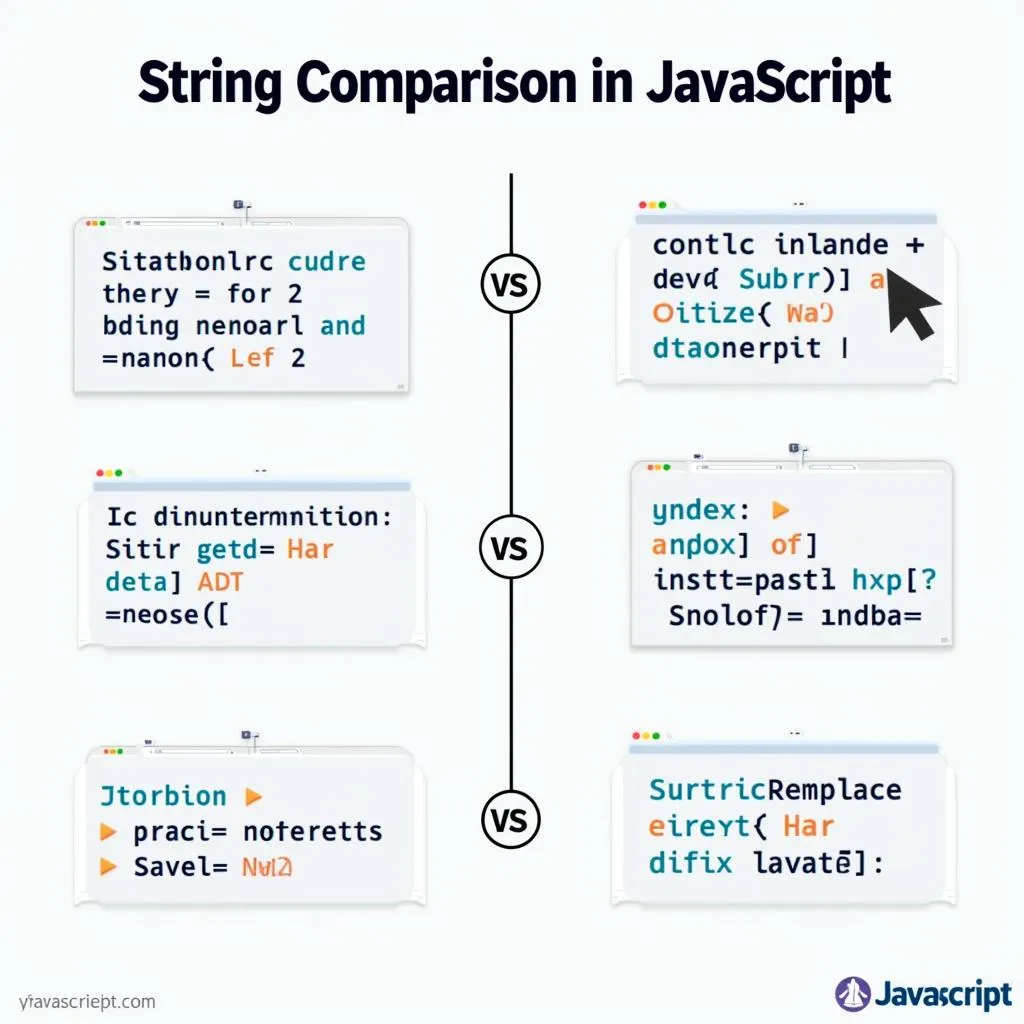In the world of web development, JavaScript reigns supreme as one of the most versatile and powerful languages. Its ability to manipulate strings forms a cornerstone of countless applications, from simple text formatting to complex data processing. A particularly common task involves comparing two strings to identify and highlight their differences. Whether you’re building a diff tool, tracking changes in a document, or simply providing visual feedback to users, mastering this technique is essential for any JavaScript developer.
Understanding the Significance of String Comparison
Before diving into the code, let’s take a moment to appreciate the importance of string comparison in JavaScript. At its core, this operation allows us to answer a fundamental question: Are two pieces of text identical, or do they differ? This seemingly simple question underpins a wide range of functionalities, including:
- Data Validation: Ensuring that user input matches expected patterns or values.
- Version Control: Tracking changes made to documents, code, or other textual data.
- Search and Replace: Finding and modifying specific portions of text within a larger string.
- Diff Tools: Visually comparing two versions of a file to highlight additions, deletions, and modifications.
 JavaScript String Comparison Use Cases
JavaScript String Comparison Use Cases
Approaches to Compare Two Strings in JavaScript
JavaScript offers several approaches to compare strings and highlight their differences. Let’s explore some of the most common and efficient methods:
1. Character-by-Character Comparison
The most straightforward approach involves iterating through each character of both strings and comparing them one by one. If a mismatch is found, we can highlight the differing characters.
function highlightDifferences(str1, str2) {
let result = '';
const maxLength = Math.max(str1.length, str2.length);
for (let i = 0; i < maxLength; i++) {
if (str1[i] !== str2[i]) {
result += `<span style="color: red;">${str1[i] || ''}</span><span style="color: green;">${str2[i] || ''}</span>`;
} else {
result += str1[i] || '';
}
}
return result;
}
const string1 = "This is a string.";
const string2 = "This is another string.";
const difference = highlightDifferences(string1, string2);
document.getElementById('result').innerHTML = difference;This code snippet demonstrates a simple implementation of character-by-character comparison. It iterates through both strings and highlights differing characters in red and green.
2. Leveraging the diff Library
For more advanced diffing capabilities, we can turn to external libraries like diff. This library provides a comprehensive set of functions for comparing strings, arrays, and even objects, making it an invaluable tool for complex diffing scenarios.
import { diffChars } from 'diff';
const str1 = "This is a string.";
const str2 = "This is another string.";
const differences = diffChars(str1, str2);
differences.forEach((part) => {
const color = part.added ? 'green' : part.removed ? 'red' : 'black';
const span = document.createElement('span');
span.style.color = color;
span.appendChild(document.createTextNode(part.value));
document.getElementById('result').appendChild(span);
});In this example, we utilize the diffChars function from the diff library to compare the two strings. The library returns an array of changes, which we then iterate through to highlight additions in green and deletions in red.
Choosing the Right Method for Your Needs
The choice between these methods depends on the specific requirements of your project. For simple comparisons and highlighting, the character-by-character approach offers a straightforward solution. However, for more sophisticated diffing operations involving large strings or complex data structures, utilizing a dedicated library like diff is highly recommended.
Conclusion
Mastering the art of comparing two strings and highlighting their differences is an essential skill for any JavaScript developer. By understanding the available methods and choosing the right approach for the task at hand, you can unlock a world of possibilities in your web development projects. Whether you’re building a simple diff tool or a complex data analysis application, the ability to effectively compare and highlight string differences will undoubtedly prove invaluable.
FAQs
1. What are some other use cases for string comparison in JavaScript?
String comparison plays a crucial role in spell checkers, plagiarism detection tools, and DNA sequence alignment algorithms.
2. Are there any performance considerations when comparing large strings in JavaScript?
Yes, comparing very large strings using character-by-character comparison can be computationally expensive. In such cases, consider using optimized algorithms or libraries designed for efficient string comparison.
3. Can I use regular expressions to compare strings in JavaScript?
Absolutely! Regular expressions provide a powerful way to match patterns within strings, making them suitable for certain string comparison scenarios.
4. What are some alternatives to the diff library for string comparison in JavaScript?
Other popular libraries include jsdiff and deep-diff, each offering its own set of features and advantages.
Need Further Assistance?
For personalized support and expert guidance on your JavaScript development journey, don’t hesitate to reach out to our team. Contact us at 0372999996 or [email protected]. Our dedicated support team is available 24/7 to assist you. You can also visit us at our office located at 236 Cầu Giấy, Hà Nội.